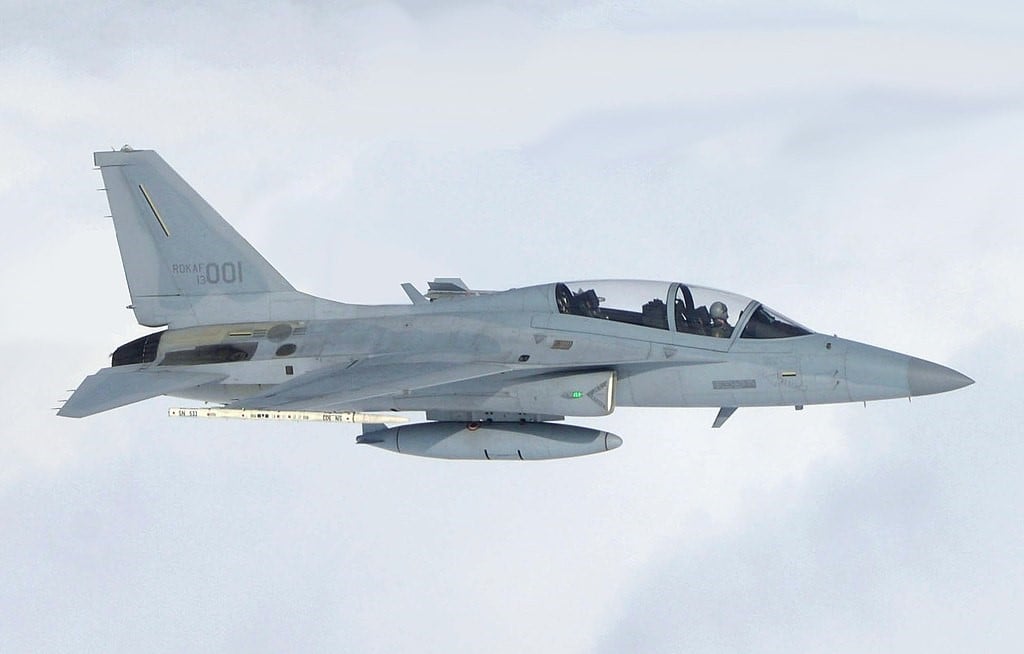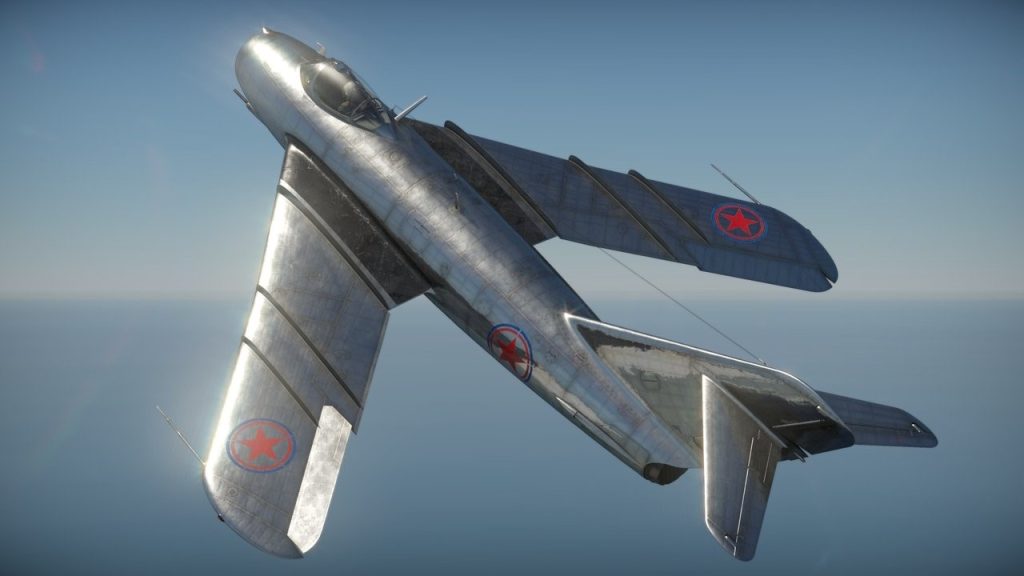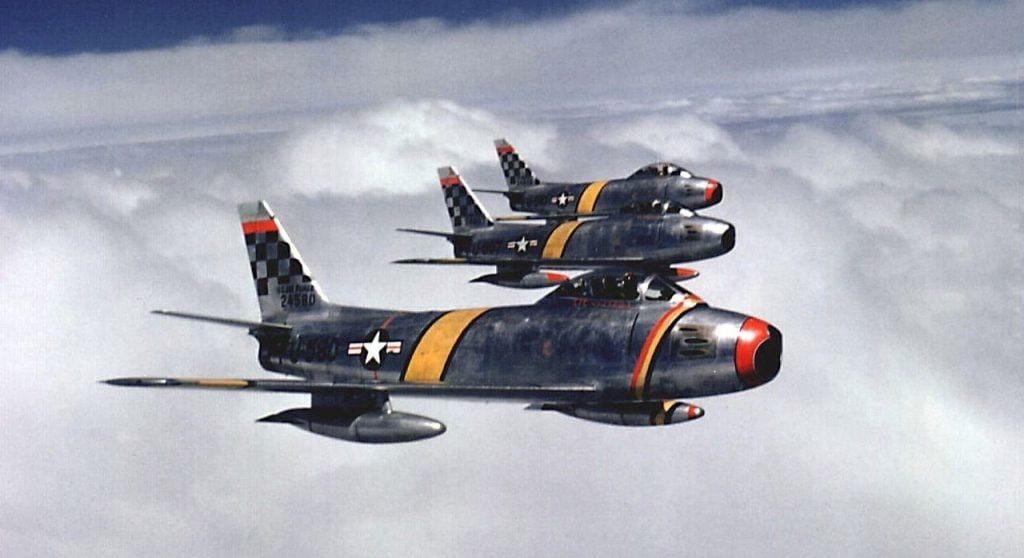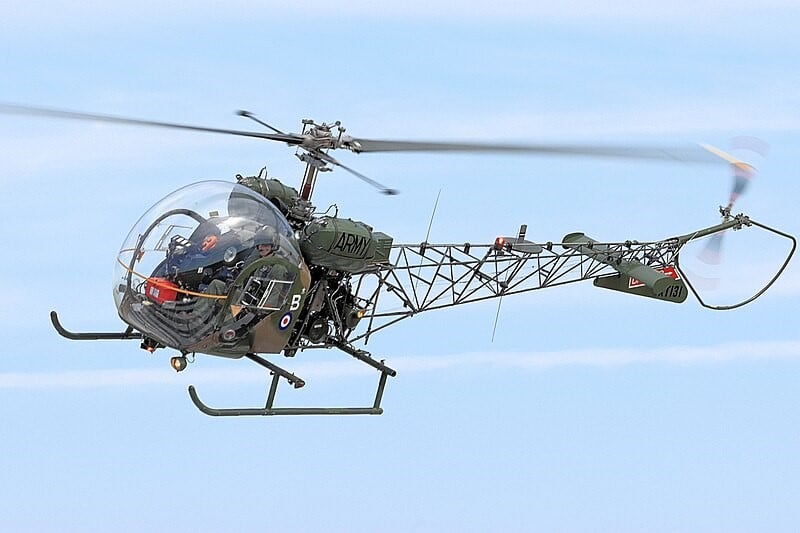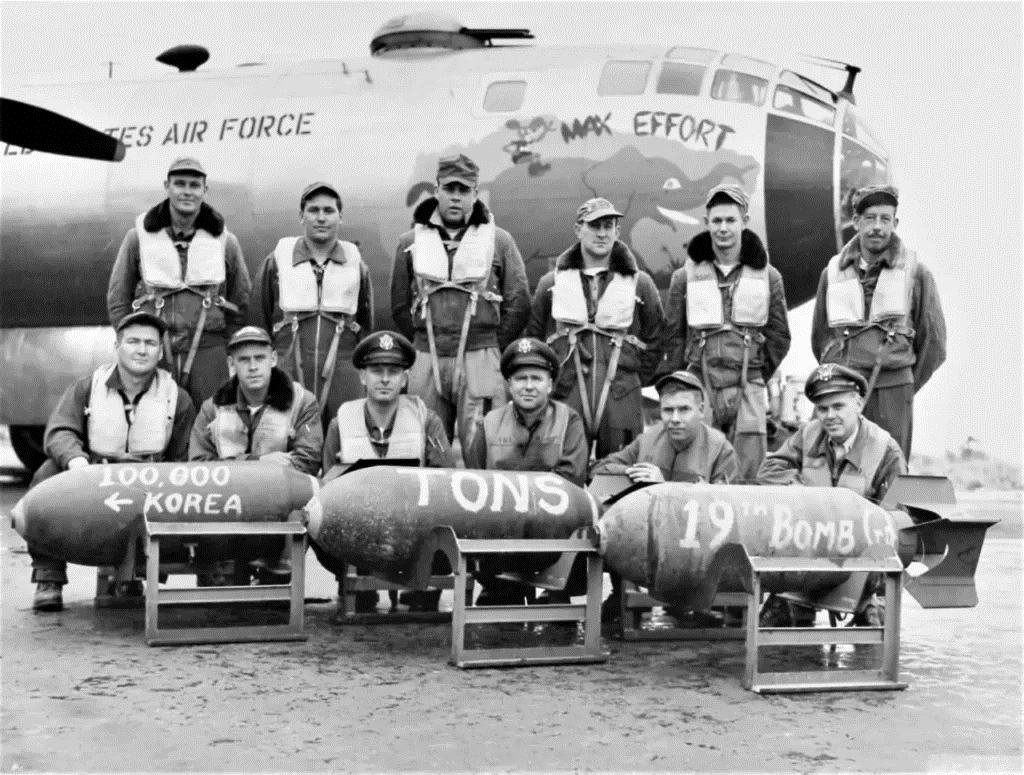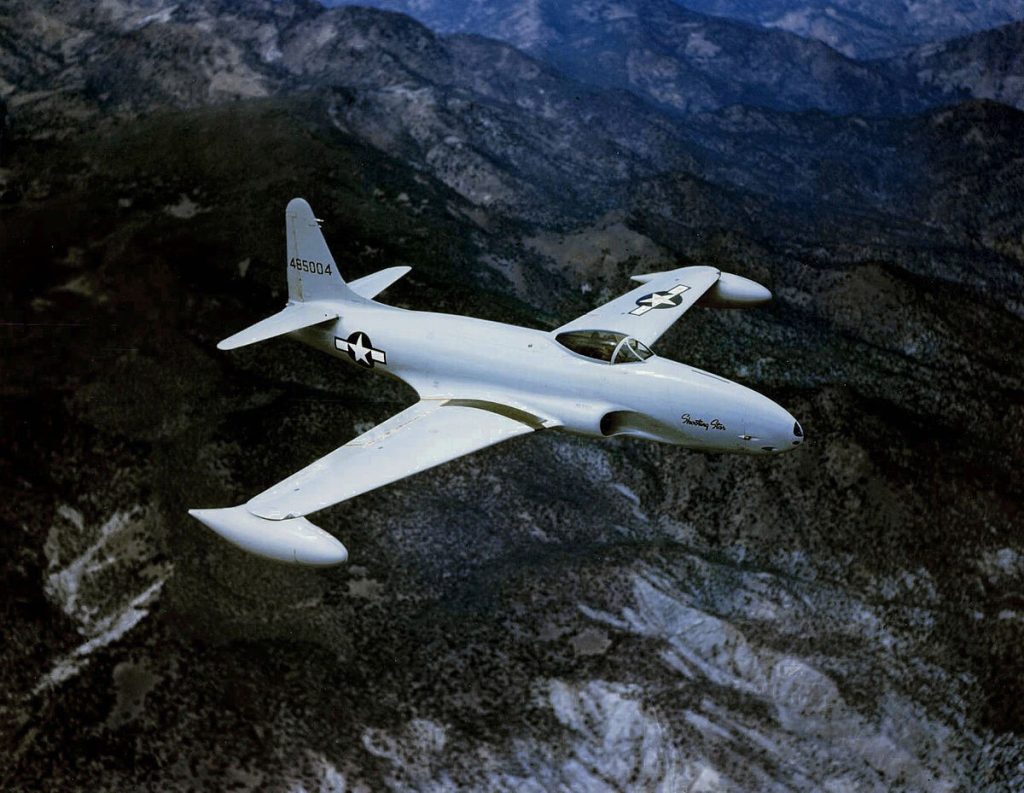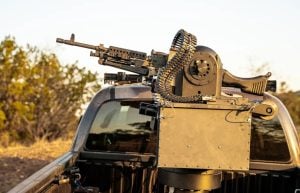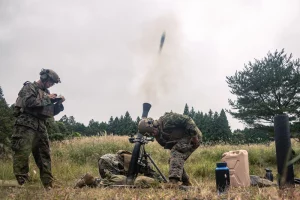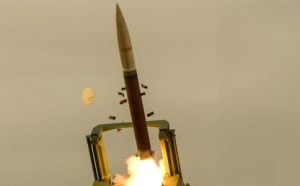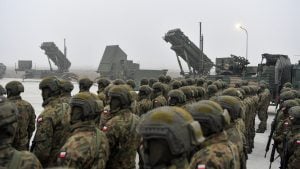The Korean War marked a significant turning point in aerial combat, introducing jet fighters into large-scale operations and setting the stage for future conflicts. This period saw the emergence of technological advancements in aviation, resulting in fierce dogfights between rival nations.
Below, we explore Top 4 Iconic Planes That Ruled the Korean Skies during this conflict, each showcasing unique capabilities and contributions to air warfare.
Also Read | How Poorvi Prahar 2024 is Redefining Joint Operations
Historical Context and Development
The MiG-15, developed by the Soviet Union, first took to the skies in 1947 and quickly became a symbol of Soviet air power. With over 13,000 units manufactured, including those built under license, the MiG-15 was designed to compete with Western fighters. Its swept-wing design allowed for superior speed and maneuverability, making it a formidable adversary in the Korean skies.
The British played an unexpected role in the MiG-15’s success by selling their advanced Rolls-Royce Nene jet engine to the Soviets. This engine was reverse-engineered and enhanced, allowing the MiG-15 to outperform many of its contemporaries. As the Korean War unfolded, the MiG-15 emerged as a dominant force, challenging American aircraft like the F-80 and F-84.
Performance and Impact
The MiG-15’s performance in the Korean War was remarkable. It was equipped with powerful cannons and had a top speed exceeding 600 mph, enabling it to engage in dogfights effectively. Its success against early American jet fighters forced the U.S. Air Force to adapt quickly, leading to the introduction of the F-86 Sabre to counter the MiG-15’s dominance.
The MiG-15’s legacy extends beyond the Korean War, as it continued to serve in various capacities, including as a trainer in North Korea. Its design and engineering principles influenced future generations of fighter aircraft, solidifying its place in aviation history.
1. The North American F-86 Sabre
Design and Features
The North American F-86 Sabre, introduced in 1947, was the United States’ answer to the MiG-15 threat. With nearly 10,000 units produced, including naval variants, the F-86 was characterized by its swept-wing design, which provided superior aerodynamic performance. Its innovative features included a bubble canopy for enhanced visibility and advanced avionics for improved targeting.
The F-86’s design allowed it to reach speeds of over 670 mph, making it a formidable opponent in high-speed engagements. The aircraft was armed with six .50 caliber machine guns, giving it a significant firepower advantage in dogfights.
Combat Performance and Achievements
During the Korean War, the F-86 Sabre engaged in numerous aerial battles against the MiG-15. The U.S. Air Force reported an impressive kill ratio, with Sabre pilots claiming 792 MiG victories by the war’s end. This translated to a kill-to-loss ratio of approximately 8:1, highlighting the effectiveness of the F-86 in combat.
One notable incident involved a Soviet pilot defecting and flying an F-86 to safety, providing valuable insights into American tactics and technology. The F-86’s success in the Korean War solidified its reputation as one of the best jet fighters of its time and influenced future air combat strategies.
2. The Bell H-13 Sioux
Introduction and Role
Although primarily known for fixed-wing aircraft, the Korean War also saw the significant use of helicopters, with the Bell H-13 Sioux leading the charge. First flown in 1945, the H-13 was a light observation helicopter that played a crucial role in reconnaissance and medical evacuation missions. With over 2,400 units produced, it was the first helicopter to enter military service in large numbers.
The H-13’s design featured a single main rotor and a tail rotor, providing agility and ease of operation. Its lightweight structure allowed for quick deployment in various terrains, making it an invaluable asset for ground forces.
Contributions to the War Effort
During the Korean War, the Bell H-13 Sioux was instrumental in providing real-time intelligence and support to ground troops. Its ability to hover and maneuver in tight spaces allowed for effective reconnaissance missions, ensuring that commanders had up-to-date information on enemy positions.
Additionally, the H-13 played a vital role in medical evacuations, transporting wounded soldiers from the battlefield to medical facilities. This capability significantly improved the chances of survival for injured personnel, showcasing the helicopter’s versatility and life-saving potential.
Also Read | What It Takes to Become a Brigadier in the Indian Army
3. The B-29 Superfortress
Overview and Development
The Boeing B-29 Superfortress, first flown in 1942, was a strategic bomber that gained fame during World War II. However, it continued to serve extensively during the Korean War, demonstrating its adaptability and effectiveness in various roles. Nearly 4,000 B-29s were produced, making it one of the most iconic bombers in aviation history.
The B-29 was equipped with advanced technology for its time, including a pressurized cabin and remote-controlled gun turrets. Its long-range capabilities allowed it to conduct bombing missions deep into enemy territory, making it a critical asset during the conflict.
Operational Impact and Legacy
Throughout the Korean War, B-29s conducted thousands of bombing sorties, delivering significant payloads that included conventional and incendiary bombs. The aircraft’s capacity to drop nearly 167,000 tons of munitions played a crucial role in shaping the war’s outcome.
Despite its effectiveness, the B-29 faced challenges from modern jet fighters like the MiG-15. The evolving nature of aerial warfare highlighted the need for faster, more agile bombers, leading to the eventual phasing out of the B-29 in favor of newer models.
4. The Lockheed P-80 Shooting Star
Introduction and Development
The Lockheed P-80 Shooting Star, first flown in 1944, holds the distinction of being the first jet fighter to see operational use by the U.S. Army Air Forces. With over 1,700 units produced, the P-80 was designed for speed and agility, featuring straight wings that allowed for stable flight at high speeds.
Although it entered service late in World War II, the P-80 saw extensive combat during the Korean War. It was primarily used in ground-attack roles and air-to-air engagements, showcasing its versatility as a fighter aircraft.
Notable Achievements and Challenges
The P-80’s first engagement in the Korean War was notable for its success against the MiG-15. On November 8, 1950, Lt. Russell J. Brown achieved a historic victory by shooting down a MiG-15, marking the first jet-to-jet kill in history. This achievement underscored the P-80’s capabilities and set the stage for future engagements.
However, as the war progressed, the P-80 began to show its age against the more advanced MiG-15 and F-86 Sabre. While it remained a valuable asset, the P-80 was gradually replaced by more capable aircraft as the conflict continued.
Also Read | Decoding Women-Based TAT Images
Conclusion
The Korean War was a defining moment in aviation history, showcasing the rapid evolution of military aircraft and the changing landscape of aerial combat. The five iconic planes discussed—MiG-15, F-86 Sabre, Bell H-13 Sioux, B-29 Superfortress, and Lockheed P-80 Shooting Star—each played a unique role in shaping the outcomes of battles and influencing future air warfare strategies.
These aircraft not only demonstrated technological advancements but also highlighted the bravery and skill of the pilots who flew them. The lessons learned from the Korean War continue to resonate in modern military aviation, reminding us of the importance of innovation, adaptability, and the relentless pursuit of excellence in the skies.
FAQs
1. What was the primary purpose of the MiG-15 during the Korean War?
The MiG-15 was primarily designed as a jet fighter, excelling in dogfights against American aircraft, particularly the F-86 Sabre.
2. How did the F-86 Sabre outperform its rivals?
The F-86 Sabre’s swept-wing design and advanced features allowed it to achieve superior speed and maneuverability, resulting in a significant kill ratio against the MiG-15.
3. What role did the Bell H-13 Sioux play in the Korean War?
The Bell H-13 Sioux was a light observation helicopter used for reconnaissance and medical evacuation, providing critical support to ground troops.
4. What was the significance of the B-29 Superfortress in the conflict?
The B-29 Superfortress conducted extensive bombing missions, delivering a substantial payload that significantly impacted the war’s outcome.
5. How did the Lockheed P-80 Shooting Star contribute to aerial combat?
The P-80 was the first jet fighter used operationally by the U.S. Army Air Forces, achieving notable successes, including the first jet-to-jet kill in history.
